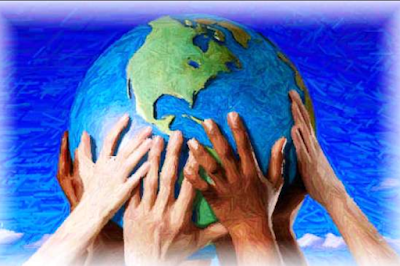From Diversity to Globalization
The cultural diversification we witness today is not evident in preliterate or tribal societies. In
such societies, cultural beliefs and practices are virtually the same for all group members.
For example, many tribal societies organize rites of passage. These cultural ceremonies
mark the transition from one stage of life to another (for example, from childhood to
adulthood) or from life to death (for example, funerals). They involve elaborate procedures
such as body painting and carefully orchestrated chants and movements. They are
often conducted in public, and no variation from prescribed practice is allowed. Culture
is homogeneous (Durkheim, 1976 [1915]).
In contrast, preindustrial Western Europe and North America were rocked by artistic,
religious, scientific, and political forces that fragmented culture. The Renaissance,
the
Protestant
Reformation, the Scientific Revolution, the French and American Revolutions—
between the 14th and 18th centuries—all involved people questioning old ways of seeing
and doing things. Science placed skepticism about established authority
at the heart of its
method. Political revolution proved there was nothing ordained about who should rule
and how they should do so. Religious dissent ensured that the Catholic
Church would no
longer be the supreme interpreter of God’s will in the eyes of all Christians.
Authority and
truth became divided as never before.
Cultural fragmentation picked up steam during industrialization as the variety of
occupational roles grew and new political and intellectual movements crystallized. The
pace of cultural fragmentation is quickening again today in the postindustrial era as a
result of globalization, the process by which formerly separate economies, states, and
cultures are becoming tied together and people are becoming increasingly aware of their
growing interdependence.
One of the most important roots of globalization is the expansion of international trade
and investment. Even a business as “American” as McDonald’s now earns well over half its
profits outside the United States, and its international operations are growing much faster
than its U.S. outlets. At the same time, members of different ethnic and racial groups are
migrating and coming into sustained contact with one another. The number of influential
“transnational” organizations, such as the International Monetary Fund, the World Bank, the
European Union, Greenpeace, and Amnesty International, is multiplying. Relatively
inexpensive
international travel and communication make contacts between people from diverse
cultures routine. The mass media make Ryan Gosling and The Vampire
Diaries nearly as well
known in Warsaw as in Wichita. MTV brings rock music to the world via MTV Canada,
MTV Latino, MTV Brazil, MTV Europe, MTV Asia, MTV Japan, MTV Mandarin, and
MTV India (Hanke, 1998). In short, globalization destroys political, economic, and cultural
isolation. As a result of globalization, people are less obliged to accept the culture into which
they were born and are freer to combine elements of culture from a wide variety of historical
periods and geographical settings. Globalization is a schoolboy in New Delhi, India, listening
to Rihanna on his MP3 player as he rushes to slip into his Levis, wolf down a bowl of
Kellogg’s Basmati Flakes, and say good-bye to his parents in Hindi because he is late for his
English-language school.
Postmodernism
Some sociologists think that so much cultural fragmentation
and reconfiguration has taken place in the
last few decades that a new term is needed to characterize
the culture of our times: postmodernism.
Scholars often characterize the last half of the
19th century and the first half of the 20th century
as the era of modernity. During that 100-year period,
belief in the inevitability of progress, respect
for authority, and consensus around core values
characterized much of Western culture. In contrast,
postmodern culture involves a mixing of elements
from different times and places, the erosion of authority,
and the decline of consensus around some
core values. Let us consider each of these aspects of
postmodernism in turn.
Blending Cultures A diverse mixing of cultural elements
from different times and places is the first
aspect of postmodernism. In the postmodern era,
it is easier to create individualized belief systems
and practices by blending facets of different cultures and historical periods. Consider
religion. In the United States today, people enjoy many more ways to worship than they
used to. The Encyclopedia of American Religions lists more than 2,100 different religious
groups from which one can easily construct a personalized religion involving, say, belief
in the divinity of Jesus and yoga (Melton, 1996 [1978]).
Nor are religious beliefs and practices drawn from conventional sources alone.
Even fundamentalist Christians who believe that the Bible is the literal word of God
often supplement Judeo-Christian beliefs and practices with less conventional ideas
about astrology,
psychic powers, and communication with the dead (see Figure 2.2).











Post a Comment